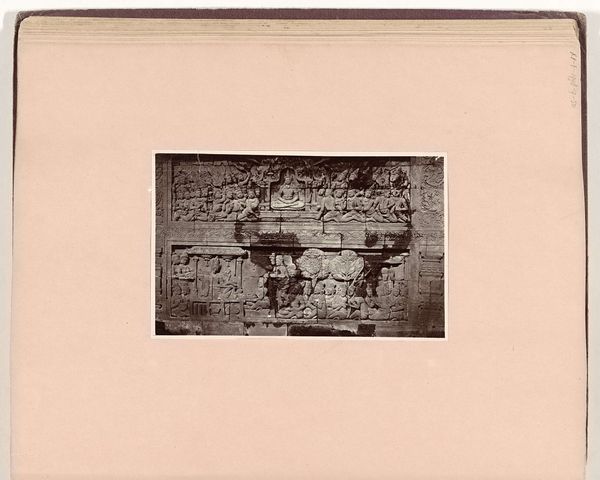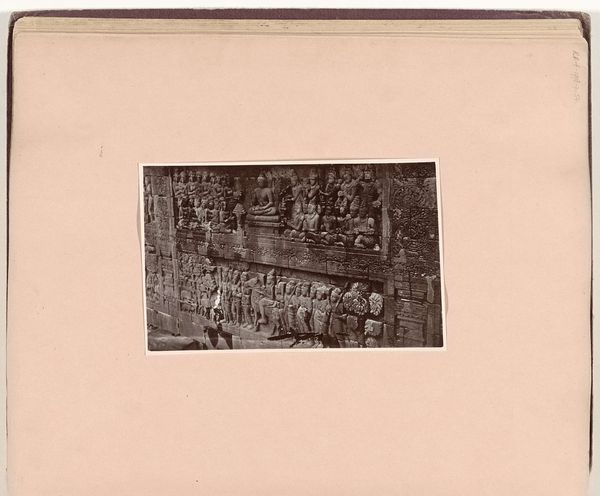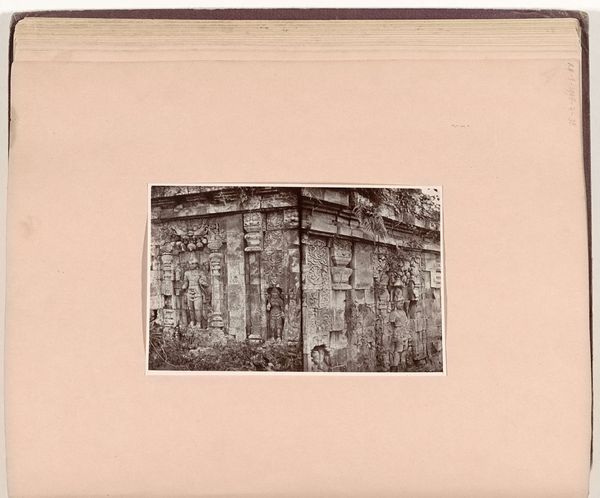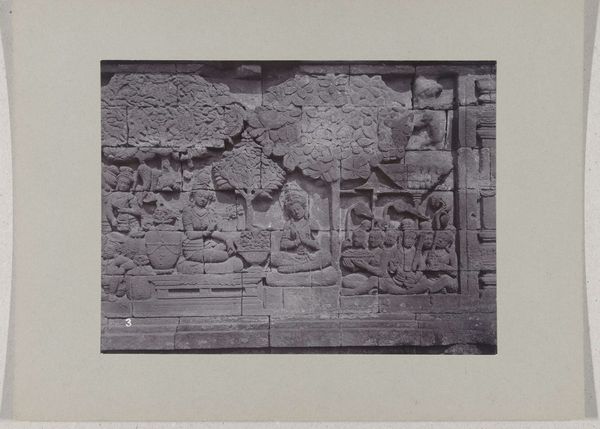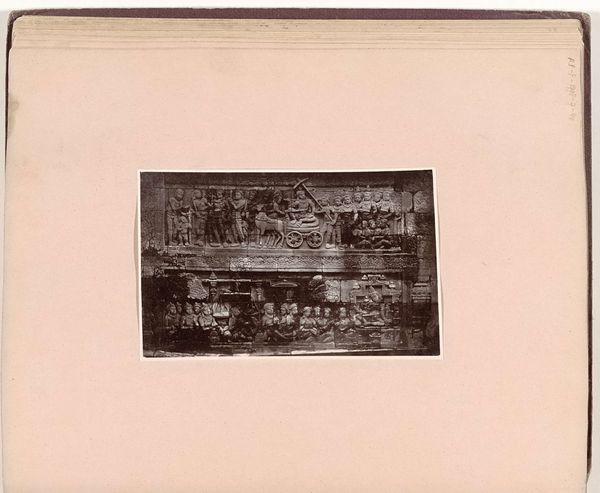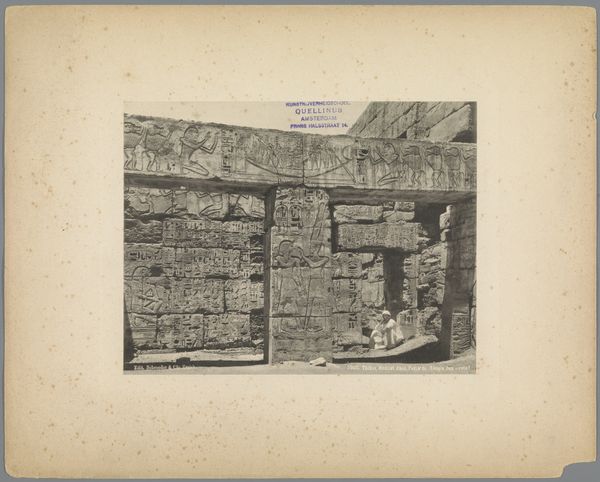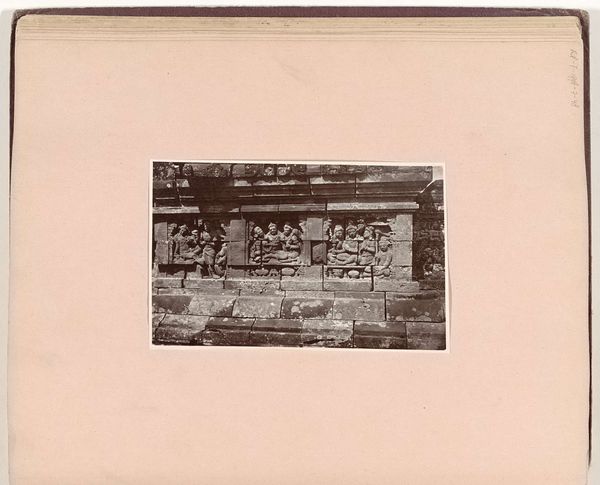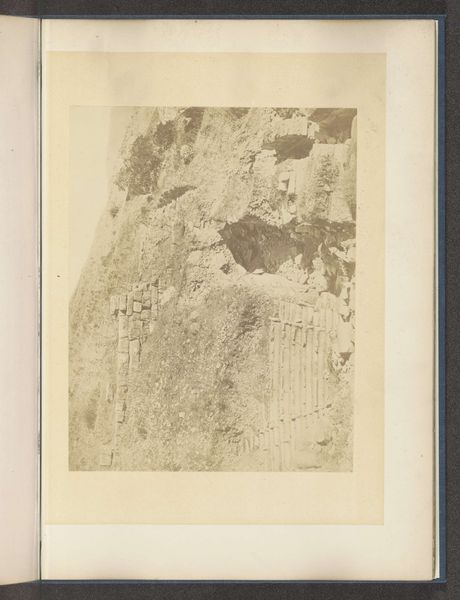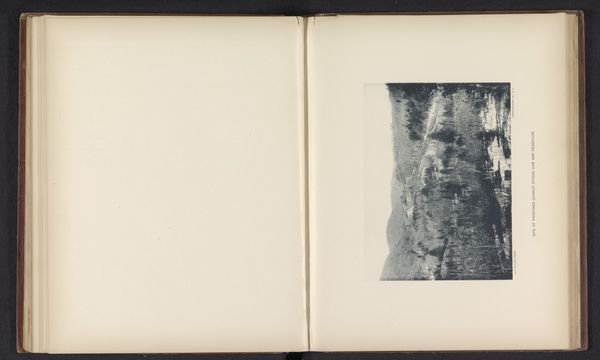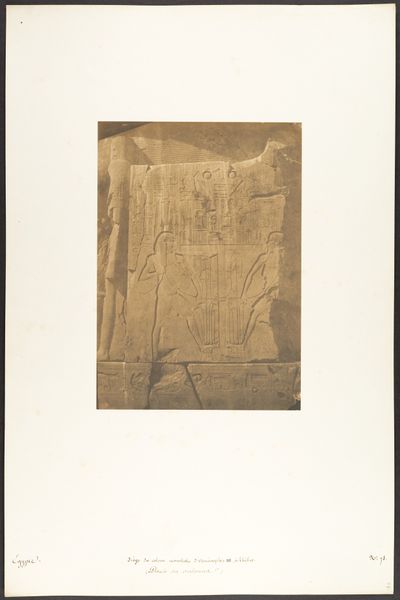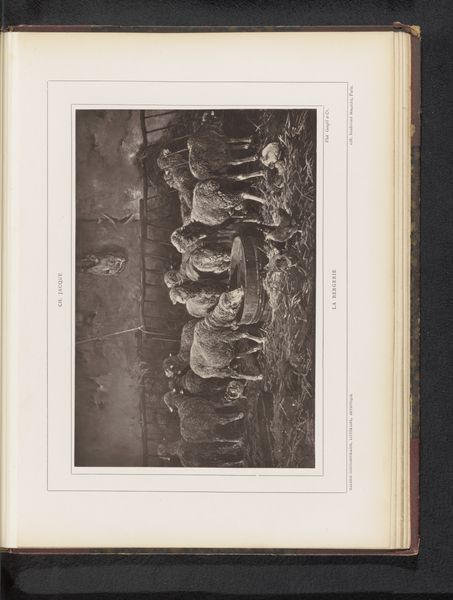
relief, photography, gelatin-silver-print
#
asian-art
#
relief
#
photography
#
ancient-mediterranean
#
gelatin-silver-print
Dimensions: height 101 mm, width 158 mm
Copyright: Rijks Museum: Open Domain
Curator: Today we're looking at a gelatin silver print dating from between 1875 and 1890, depicting a relief from Borobudur. It’s attributed to C. Dietrich. My first thought is its incredible density. All those figures seem packed in. It makes the whole thing feel so weighted and permanent. Editor: I'm immediately struck by the narrative complexity within this frame. The layering of figures, the different registers they occupy… they must each tell a story. Is there a central figure here or does meaning come from the accumulation of smaller stories? Curator: Given that it's a photograph of a relief, we need to remember the layers of production. The original carving involved skilled artisans using specific tools and techniques in stone, working according to possibly very rigid social hierarchies and deeply embedded cultural systems. Then Dietrich’s photography translated this labour-intensive object through the lens of photographic technology. Editor: Absolutely, and the photographer's choice of perspective contributes a layer of interpretation too. It’s a powerful symbol, hinting at both human limitation and a striving towards enlightenment through narrative cycles of learning and remembering. Consider the poses, each tells of different moments and choices… of consequences both intentional and accidental. Curator: Right. What was the photographer thinking? What's the intention in translating something already so culturally charged? Does photography democratize such an artwork, making it more accessible, or does it somehow strip away its original aura? Editor: It makes one ponder what is highlighted by photography itself as a cultural tool in relation to Buddhist principles? The way the photographer has captured the play of light and shadow might almost invite viewers to see it as an allegory for different levels of understanding – perhaps mimicking the Buddhist principles. Curator: It certainly makes me think about how the act of photographic reproduction and its distribution also created a different type of social life and economy surrounding these ancient artworks. Editor: Ultimately, it is an amazing reminder that art persists, speaks across time, and gets renewed each time a new eye looks on it. Curator: Indeed. It’s intriguing to consider the physical labor involved and the cultural processes at play.
Comments
No comments
Be the first to comment and join the conversation on the ultimate creative platform.
